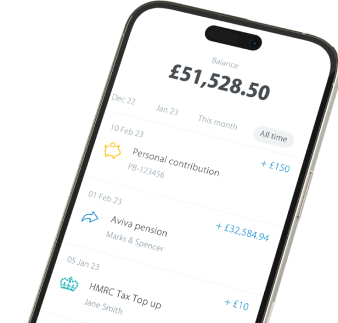
This article was last updated on 15/04/2024
The landscape of the pensions industry has evolved over the last few years. It’s now been a decade since the introduction of Auto-Enrolment in workplaces across the UK. Though this has seen a big increase in the amount of people who are now saving towards retirement, there’s a glaring portion of society that this doesn’t apply to; the self-employed.
Before the COVID-19 pandemic hit, the self-employment sector was the fastest growing amongst the workforce. According to a recent report from the UK Parliament, more than 16% of working people are self-employed. This essentially means that all of these people are ineligible to be auto-enrolled into a pension scheme, and so if they wish to start saving for retirement, they’re responsible for doing the leg-work themselves.
Setting up a pension can be an extra burden that many of us haven’t factored in. When working for yourself, you may already have enough to worry about; including managing the day-to-day running of your business, registering with HMRC, negotiating your own tax affairs and National Insurance contributions, setting up business insurance, and a myriad of other pieces of admin. So setting up a pot that you can’t access until you retire might be the furthest thing from your mind. However, this does mean that self-employed people are falling behind, with only 16% contributing to a pension related to their work, as opposed to eight in 10 of those eligible for Auto-Enrolment. So what can we do to close this gap?
Why aren’t the self-employed contributing to pensions?
While Auto-Enrolment has seen an increase in workplace pension saving, the opposite trend is apparent for the self-employed who are self-reliant on investing in their own private pensions, with the number dropping from 48% in 1998 to the 16% we see today. Individuals will have their own reasons for not doing so, but what factors could lead to a lack of pension saving in the self-employed?
1. Cost of living
We’re all feeling the pinch at the moment when it comes to our bills and we can’t escape the term ‘cost of living crisis‘, but if you’re self-employed, this may be a particular burden. Three in five businesses cite rising energy prices as a reason for increasing the price of their services. The extra expenses that come with being a business owner can leave little money left over to put into your savings, with a report from the London School of Economics saying that over 40% of the self-employed are earning less than £1,000 a month.
2. Keeping money elsewhere
The autonomy of being responsible for your own earnings can also bring an inconsistency in the amount coming in month-to-month. Therefore, if you’re concentrating on having enough savings to access on a ‘rainy day’, the long-term thinking that a pension requires may simply not be in your mindset. The ability to quickly access funds in an ISA might be more attractive to some, or if you’re a property owner, your priority may be paying off your mortgage.
3. Lack of Auto-Enrolment
Unlike those who are classed as contracted employees, if you’re a business owner or a gig worker, there’s currently no legislation in place to say that you must be enrolled in a pension scheme. In the years since Auto-Enrolment was introduced, the amount of employees contributing to pensions has sharply increased, with 79% participating as of 2021, compared to only 47% in 2012. These numbers would suggest that people are less likely to consider saving towards a pension if the responsibility lay solely in their own hands, but if that task’s taken care of by an employer, then they’re more likely than not to opt in. With no such luxury afforded to the self-employed, the pension gap between them and contracted workers has only widened.
Closing the gap
It may be that the solution to this widening gap is as simple as introducing an Auto-Enrolment scheme for business owners, the self-employed, and gig workers. That’s certainly the opinion of the All Party Parliamentary Group, who in their financial resilience report on UK households recommended that an equivalent of automatically enrolling the self-employed is put in place.
While we wait to see if any extra help does become available, there are a few things you may find helpful to consider if you’re self-employed and feel like you’re falling behind with your pension saving:
1. Set up your own personal pension plan
First and foremost, if you’d like to start contributing to a pension while you’re self employed, you can do so. Some products, such as PensionBee’s self-employed pension give you the option to make flexible contributions, so if you find your income varying from one month to the next, you can increase or decrease the amount you pay in accordingly. There’s no minimum contribution limit, so there’s no pressure to pay in an amount you don’t think you can afford.
2. Consolidate your old pensions
If you’re currently self-employed, but have previously worked for other organisations, then there’s a good chance you may have been enrolled in a pension during those periods of employment. If that’s the case, then combining your old pots into one plan may help you to see exactly how much you’ve previously saved, and what you’ll need to save for the future. The Association of British Insurers (ABI) says that around 1.6 million pension pots are sitting unclaimed, so you may want to check if there are any you’ve lost or forgotten about over time. The government offers a free pension tracing service if you’re unsure.
3. Set up regular contributions
With all the admin that comes with running your own business, it may be that there’s too much on your mind to remember to make a pension contribution every month, or you simply may not have the time to keep up with payments to your scheme. If you’re more confident in the consistency of your earnings, you may consider setting up regular contributions using ‘Easy bank transfer‘. This payment method utilises Open Banking technology to save time, meaning that you don’t have to enter all of your details every time you want to contribute.
4. Consider the tax benefits
Pension contributions are usually classed as a business expense if you’re the Director of a limited company, meaning that you’ll not only receive tax relief on your personal contributions, but also save on corporation tax on payments made directly from your business. Higher and additional rate taxpayers can claim further tax back in their Self-Assessment tax returns on top of the 25% that your pension provider will usually claim automatically. Pension contributions also come from your pre-tax income, so this can also mean a reduction in your National Insurance contributions. Therefore saving into a pension as a self-employed person may mean that you take home more of the money you’ve earned.
Risk warning
As always with investments, your capital is at risk. The value of your investment can go down as well as up, and you may get back less than you invest. This information should not be regarded as financial advice.






